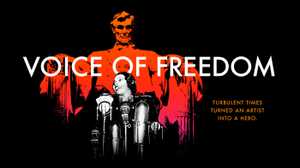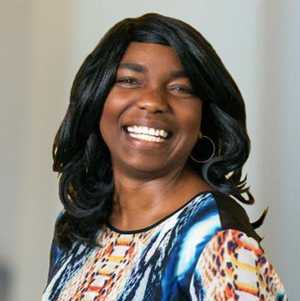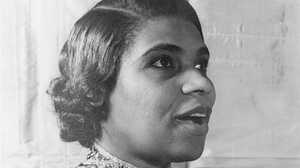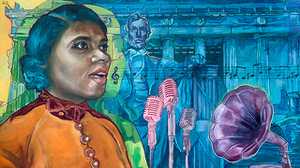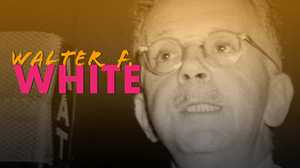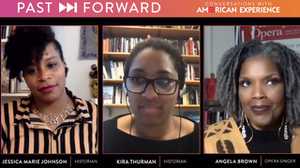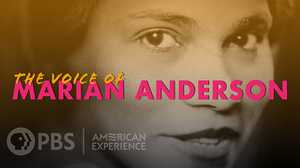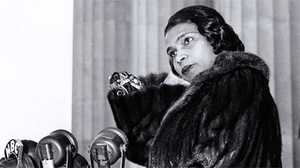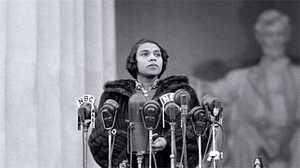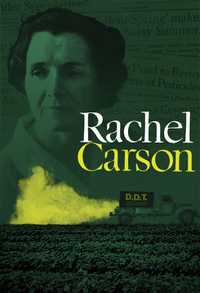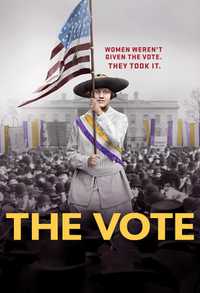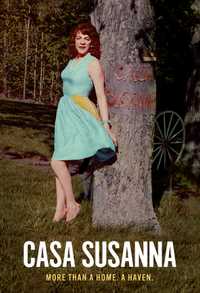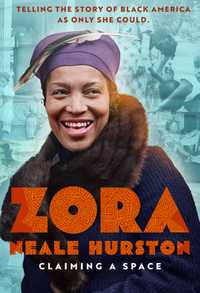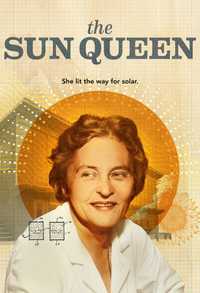Narrator: In the spring of 1939, Marian Anderson was one of the most famous entertainers in the world, known to millions as “The Voice of the Century.” But as she rehearsed in the shadow of the Lincoln Memorial, it was all she could do to keep her nerves in check. In a few hours Anderson was to sing a free concert for tens of thousands of spectators here, and for millions more listening on the radio coast-to-coast. None of this had been her choice.
Leslie Ureña, Associate Curator, National Portrait Gallery: She called her manager the night before and said, “Do I still have to go through with this?”
Lucy Caplan, Cultural Historian: It was so weighted with political and social symbolism in ways that were beyond her control.
Allida Black, Historian: She knew the minute that she stood before Lincoln that this would be how she would be defined for the rest of her life.
Narrator: Racism shadowed every aspect of Anderson’s life. A few months earlier, she had been barred from the only suitable concert hall in Washington by an organization called the Daughters of the American Revolution.
Anderson had been shut out because of her race many times before, from many places. But this time civil rights groups, churches, even First Lady Eleanor Roosevelt had rallied to defend her rights. It had all led to this moment, to an unprecedented demonstration for freedom and equality, in the heart of the nation’s capital.
Adriane Lentz-Smith, Historian: Anderson has an appeal that crosses age and color lines. This woman, whether she wants to be or not, is perfect for highlighting the absurdity of American racial codes.
Lucy Caplan, Cultural Historian: She had worked so hard to be known as an artist. And she knew that this would turn her into a political figure. And that was distinctly not what she wanted for herself. But she also recognized the power of what she could do. She was becoming part of this thing that was so much bigger than herself.
Adriane Lentz-Smith, Historian: The civil rights movement did not begin in 1954 or 1955. The struggle was already in motion. Folks had been fighting, pushing, refining for decades.
Kira Thurman, Historian: When we think of the civil rights movement, we go first to a lot of African-American men. Marian Anderson is an outlier.
Angela Brown, Opera Singer: She became a political icon, the face of a movement. And that was something she could never step back from.
Philadelphia
Narrator: Marian Anderson had known what she wanted from life since she was a girl. “I was so interested in music,” she said, “that other things didn’t matter a lot.” So when the seventeen-year-old walked into the lobby of the Philadelphia Musical Academy in 1914 and waited for her turn to fill out an application, she was on the verge of realizing her fondest ambition. If she was accepted by the Academy, then Anderson could begin her formal musical education: singing lessons, languages, acting, and music theory. It would be a dream come true.
Anderson had been known among Philadelphia’s Black community ever since she joined the Union Baptist choir after her sixth birthday - “the baby contralto,” she’d been called.
Music: Choir sings Harry T. Burleigh arrangement of “My Lord What a Morning”
Angela Brown, Opera Singer: She sang a lot of spirituals, hymns, the great anthems of the church. Union Baptist was one of those places where a Negro, a Black person, could go and hear high church, high holy music. And so those were the things that she cut her teeth on early on.
Narrator: But Marian Anderson was an unlikely candidate for the Musical Academy. She’d had to leave school when she was twelve years old, after her father was killed in an accident at work. The family was plunged into poverty.
Alisha Jones, Ethnomusicologist: Her whole world turned upside down when her father passed. // Her mother // had to // take on // multiple jobs // in order to provide // for // her three daughters. // The sort of sacrifice // and love investment that her mother was making // stuck with Marian Anderson for the rest of her life.
Narrator: While her mother was working at a tobacco factory, Marian helped raise her two younger sisters and did odd jobs to help with the finances. Union Baptist became her refuge. It was at an evening concert there that Anderson first caught the eye and ear of America’s greatest Black tenor, Roland Hayes.
Lucy Caplan, Cultural Historian: Roland Hayes is what Anderson aspires to be, And he recognized that Anderson was no kind of just top student in the church choir kind of voice. He became a real mentor.
Narrator: Hayes offered support and guidance, but he couldn’t change the financial realities of Anderson’s life. Friends and supporters could see her future being slowly smothered. So when Anderson was a teenager the congregation at Union Baptist took up the first of many collections for the young woman they called “our Marian.”
Angela Brown, Opera Singer: There’s always a ram in the bush. She did have benefactors that weren't wealthy, but had great wealth of heart.
Narrator: By the time Anderson was seventeen, Philadelphia’s Black community had raised enough money that she could finally begin high school, and best of all, study music at the Philadelphia Musical Academy. But when the time to apply finally arrived, Anderson waited all day in the lobby, as White girls were ushered past.
Angela Brown, Opera Singer: When everyone was gone, Anderson was still standing there. And the white girl says, "Well, what do you want?" And she says, "Well, I want to apply for the school. You know, I've come to get information." And she was like, "We don't take colored."
Adriane Lentz-Smith, Historian: Most Black people in the public eye have a story about their initial encounter with Jim Crow racism. And it usually coincides with some kind of coming of age because it is, in fact, in some ways a coming of age story.
VO: I don’t know how I got out of the place and back home. Maybe it would have been better if my mother had told me when I was littler what kind of things could happen to you if you were a Negro. All of my dreams were just shattered around my head.
Chicago
Narrator: Ever since her father died, Anderson had watched her mother confront hardship with grace and unwavering determination. “Mother had a strength beyond herself,” she said, and Marian had taken on those same qualities. Just weeks after the crushing blow at the Musical Academy, Anderson began singing lessons with a neighborhood teacher, and then started high school. In her spare hours, she taught herself piano and sang for just about every Ladies Auxiliary, YWCA, church group and social club in Philadelphia.
Alisha Jones, Ethnomusicologist: She had to regroup. In many ways, she found her ingenuity during this time. She still found a way to steal away, as the elders say.
Narrator: But despite her talent and ambition, Anderson remained almost unknown outside her Philadelphia community. So when the twenty-four-year-old was invited to perform in Chicago in 1919 at the first meeting of the National Association of Negro Musicians, she jumped at the opportunity. That summer was a risky time for a Black woman to be traveling across the country. In July alone, there were deadly riots in Washington, New York, Norfolk, Virginia, and a dozen other cities.
Adriane Lentz-Smith, Historian: The summer of 1919 - “Red Summer” - is [1]the crest of one of the most vicious years in American history. There are riots that kind of sweep the nation. They're, not just Southern riots. Not only have segregation and the underlying ethos of Jim Crow gone national, but the commitment to reinforcing and defending them through, through terroristic violence is also national.
Narration: Jim Crow was following the Great Migration northward, and both had landed in Chicago. In the last two years alone, an estimated fifty thousand Black people had arrived in the city, almost doubling Chicago’s African American population. New arrivals crowded up uneasily against a huge influx of immigrants fleeing Southern and Eastern Europe. Those European migrants were divided by religion, language, and ethnicity, but they held one thing in common: an antipathy toward Black people. Business owners exploited racial tensions, frequently using Black workers to undercut wages and break strikes.
Adriane Lentz-Smith, Historian: Marian Anderson travels to a Chicago in 1919 that's basically a powder keg. And it has many of the conditions that you'll see in cities across the country. There's pressure on housing. There's competition over jobs. There are returning soldiers, Black and white; Black soldiers angry about their World War 1 experience and convinced that they've earned their full citizenship rights and white soldiers determined to keep African-Americans from acting on their convictions.
Narration: On the afternoon of July 27th, fourteen-year-old Eugene Williams was killed when his raft drifted into the white section of the 29th Street Beach. A policeman refused to arrest his assailant; fights broke out between Black and white bystanders. While Anderson was at the Chicago Musical College preparing for the most important performance of her life, the rising tide of racial violence came crashing down around her.
Adriane Lentz-Smith, Historian: There were rampaging mobs moving through Black neighborhoods, rumors circulating about violence being done all over the city, bodies riddled with bullets or set afire.
Narrator: Over five days, twenty-three African Americans and fifteen whites were killed in Chicago, and five hundred people injured. But the National Association of Negro Musicians would not be deterred: the performance had to be postponed and relocated to a cramped hall at the YMCA, but on the first of August 1919, Marian Anderson made her concert debut in an extraordinary moment.
Music: Anderson sings Bach “Erbarme Dich”
Adriane Lentz-Smith, Historian: One of the things that art has long done especially for African-American American communities, is to find a language of transcendence, of hope in hopelessness. Because the moment you let go of that, what do you have? You’re lost.
Myth and Memory
Narrator: The memory of Red Summer was still fresh on Memorial Day in 1922, when official Washington gathered on the Mall to dedicate the new Lincoln Memorial. The organizers had invited a few African American lawyers, professors, and other dignitaries, but many of them walked out when they realized they were being herded to a segregated area, back among the dirt and weeds.
Adriane Lentz-Smith, Historian: The fact that the dedication of the Lincoln Memorial was segregated is surprising to us until we actually think about the moment in history and what Washington, D.C. was like. On the other side of the violence of 1919, with the country's redoubled commitment to white supremacy, segregation was so deeply embedded that it was hard to imagine how it would be undone.
Narrator: Fifty-seven years after the end of the Civil War, Lincoln was still widely revered among African Americans. “Time presents a thousand heroes but the world knows only one Emancipator,” the nation’s largest Black newspaper, the Chicago Defender, declared. He had “freed the bondman...the greatest act, by the greatest American.” But over time white Americans had crafted a very different memory of Lincoln, and of the Civil War itself.
Adriane Lentz-Smith, Historian: By 1922, the narrative of the Civil War as a tragic break among white men in which enslaved people have no speaking role, right, like that is firmly in place. We'll get to the point where people are saying the Civil War was never about slavery. And so Lincoln as the Great Emancipator, is gone out of the narrative.
Narrator: “Lincoln will be remembered in history not as having freed men from slavery,” President Harding told the audience, “but as having kept the Union intact.” By erasing emancipation, the veneration of Lincoln could be squared with the subjugation of Black Americans.
The only African American speaker that afternoon was Dr. Robert Moton, the president of Tuskegee Institute. “This memorial is but a hollow mockery,” Moton wrote in the draft of his speech, “a symbol of hypocrisy, unless we can make real in our national life the things for which he died.” But Moton’s draft was censored by the event’s organizers, leaving only a bland tribute to Lincoln.
Music: Military band plays “My Country Tis Of Thee”
When the ceremony was over the U.S. Marine Band struck up “My Country ‘Tis of Thee,” and the crowd began drifting away.
The Black press was outraged by the ceremony, and by the revision of history. The Chicago Defender urged African Americans to boycott the Memorial: “Pass the shrine by,” it advised. “Later on, let us dedicate that temple thus far only opened.”
Fighting The Odds
Narrator: Following her harrowing experience in Chicago, Anderson threw herself into a series of short concert tours of the Upper South, traveling with an accompanist on a circuit of Black colleges, theaters, and churches.
Kira Thurman, Historian: We forget, or perhaps we don't know, that there were vibrant Black communities organized around classical music, and that there were Negro symphony orchestras and there were Negro string quartets. And people would organize opera performances with entirely Black audiences and entirely Black musicians performing.
Lucy Caplan, Cultural Historian: They didn’t make a lot of money. But at the same time they were welcomed warmly and treated with extreme respect and commitment by the audiences they had in these settings.
Sharon Vriend: Music was her refuge. So she cocooned herself on one level. But she was also a risk taker. She had to support herself and her family in a time when there was a dual legal system, a dual political system and harsh segregation and violence against African Americans.
Kira Thurman, Historian: Being beaten up on the streets lynchings rape happened constantly in the 1920s and 30s. Her first time going to the South she couldn’t sleep because she’d heard stories about white passengers coming to the African-American section of the train and throwing passengers out of the train. And so she was terrified that that could happen to her.
Angela Brown, Opera Singer: Early on, during those tours when she was on trains, the cars were dirty and didn't have a bathroom and they didn't have access to food. She went through the trenches.
Narrator: If Anderson was ever to move beyond this grueling circuit, she would need professional training. Despite her stunningly beautiful voice, Anderson knew that she couldn’t bring music to life the way Roland Hayes did
.
Music: Hayes sings Schubert, “Du bist die Ruh”
Vo: Roland Hayes sang in such a convincing manner, and with such beauty, that each song had a picture, whether it was in German or French or Italian. It might be a person who is very distressed or wild or something of the sort, or other things he did in such a caressing manner...you knew immediately what the thing conveyed to you.
Lucy Caplan, Cultural Historian: She wasn't about spectacle or glamour. And this music, German lieder, that's so much about kind of interiority and the self, it really fits with who she was.
Narrator: It took some work persuading Giuseppe Boghetti to even grant an audition; he was one of the busiest vocal coaches in the Northeast. But Anderson quickly became his star student. Together they worked on vocal projection, agility, and balance. Boghetti also introduced her to the languages required of a classical performer, with one glaring exception: Anderson learned not a word of German, the language of the lieder she hoped to master.
Life wasn’t all work; some afternoons a tall, light-skinned, young Black man came by the Anderson home; he and Marian would listen to records together on his Victrola. Orpheus Fisher came from a well-to-do family and was studying to be an architect. “I felt quite interested that he was interested,” Anderson recalled. But then Orpheus caught Marian by surprise.
VO: He came along and asked me one day if I would run off with him and marry. Well, the thought of it just terrified me. And I knew the things that people do expect when they get married. I could see that I would have to give up my work. And I just wasn’t prepared for it.
Sharon Vriend Robinette, Historian: She had the opportunity to be a successful architect's wife or to take a risk and become a career musician. And that was not written in stone at that point.
Kira Thurman, Historian: She was deeply in love with Orpheus Fisher and could have easily imagined settling down, perhaps having children. But instead, she made a choice to pursue her career in a world that was hostile to Black women.
Narrator: In fact, by the fall of 1923, Anderson’s career seemed to be reaching a tipping point: her concert tours were getting longer; fees were rising. And most exciting of all, she had received an invitation from the Victor Talking Machine Company.
Twenty years earlier phonographs had been mere novelties; a recording might sell a few dozen copies. But that changed in 1904, when Victor recorded an Italian tenor, Enrico Caruso, singing what was called “high class” music.
Music: Enrico Caruso sings “Vesti la giubba” (1907 Victor recording)
Narrator: Three years later Caruso would sell a million copies of a single aria, Victor was one of the biggest companies in the world, and opera was mainstream.
Lucy Caplan, Cultural Historian: The notion of being able to put on a recording of a great artist in your home was something totally new. So classical music and classical artists become much more popular. This is a really profound transformation - it was really a part of mass culture.
Narrator: By the early 1920’s record companies were popularizing new styles of music, and targeting specific markets, including racial and ethnic groups. So the Artist and Repertoire department at Victor was primed when they heard of an exciting young Black singer. On the 10th of December 1923, Marian Anderson was led into a recording studio at Victor’s New Jersey headquarters, where she positioned herself in front of a recording horn as the small orchestra crowded in around her.
Music: Marian Anderson sings Burleigh arrangement of Deep River (1923 recording)
Narrator: Anderson always sang a group of what were called “Negro spirituals” in her concerts, arrangements by Black composers of the religious songs that had given solace to their forebears. They had never before been recorded by a major American label.
Kira Thurman, Historian: What Marian Anderson did, along with Roland Hayes in the 1920s and 30s, was really popularize //African-American spirituals and bringing them to white audiences. At a time when Black women and Black musicians were just so denigrated, she made this argument over and over again, that African-American music was worth celebrating, and that it was just as elevated as the music of Beethoven or Mozart.
Alisha Jones, Ethnomusicologist: She had a huge investment in translating the dignity of a people onto the concert stage. This was the sound and echo of a rural and slave past, confident, strong and imaginative, a reflection of the people to themselves. Marian Anderson challenged and broadened people's ideas of what the souls of Black folk looked and sounded like.
Narrator: Three months after her recording session, Anderson’s first record was out, she was hailed by the Black press as the “greatest colored contralto of her generation,” and she packed the Renaissance Dance Hall in Harlem. This was the pinnacle of Black entertainment, but Anderson wanted more. The time had come, as she put it, to “take a plunge downtown.” The odds of an African American artist gaining a mainstream, crossover audience were vanishingly small, but that is exactly what Anderson had in mind. She placed her bets on a concert at New York’s Town Hall in April. This, as far as the white press was concerned, would be her concert debut. No sooner had Anderson begun rehearsing a highly ambitious program, than word came that Orpheus had married another woman.
Anderson had been putting Orpheus off for years, but still the news hurt - not only was his new bride wealthy, she was white. Orpheus’s pale skin made it possible to pass for white; faced with his own challenges as a budding architect, he decided to do just that. On the surface at least, Anderson swept the pain aside, as she always did. “He had his life,” she said, “and I had mine.”
Anderson threw herself into the Town Hall rehearsals. The promoter reported that the tickets were selling out, and Boghetti soothed her worries about the four German lieder she was to sing.
VO: I am sure that I did not know one word of German at the time. Now the awkward part is that your accents go in the wrong places. However Mr. Boghetti gave me to believe that it was not bad at all - as a matter of fact he said it was fine.
Narrator: On the evening of April 10th 1924, Anderson walked onstage for her New York debut. “I felt for all the world,” she said, “like a prima donna.”
Alisha Jones, Ethnomusicologist: She was sold a bill of goods, that this was a sold out concert, and that she would finally make a debut to a packed house. It was definitely not a packed house.
Narrator: Anderson was stunned. “All the enthusiasm that I had built up seemed to fall to my feet,” she remembered. The real problem came when she sang the group of German lieder. “Miss Anderson betrayed a sad want of understanding of the deeper meanings of the lyrics and of lied interpretation,” one critic wrote. “She should devote more time to study,” wrote another, “and less to the concert stage.”
Angela Brown, Opera Singer: She was always used to the glowing review. Everywhere else she had sung, whatever mistakes in grammar or in breathing or in diction that were made, they were always excused. But in New York City, at Town Hall, she was under a bigger microscope and the critics picked her apart.
Narrator: For twelve years Anderson had struggled to overcome the hurdle that had been so casually thrown up by a Philadelphia music school. She had been denied the opportunity to study music, and no amount of talent or hard work could disguise the fact. She retreated from the music scene.
VO: I didn’t want to see music. I didn't want to hear it. I was pretty sure that I would choose something else as my life's ambition.
Europe
Narrator: Anderson’s seclusion lasted for months, until self-doubt gave way to a new realization: “Music was something that I sort of had to do,” she said. “It wouldn't let me rest.” Her return to the grind of small tours only convinced Anderson that her future lay elsewhere. On the evening of October 22, 1927, Marian Anderson gathered her bags, made way to the piers on Manhattan’s west side, and boarded the Ile de France as it sailed for England, and a new beginning.
Kira Thurman, Historian: If she kept going as she did in the United States, she would only sort of have access to certain music halls, to certain teachers, to certain audiences. She was already starting to see the successes of other African-American musicians in Europe. Roland Hayes //was already there, and by 1924, he was making about a hundred thousand dollars a year. So why not go?
Angela Brown, Opera Singer: The lack of formal education in music always dogged her in the back of her mind ah that she wasn't good enough, that she couldn't speak different languages well enough, that she didn't know everything that her white cohorts knew. She decided to educate herself where a Black person could excel.
Narrator: Anderson’s journey began with some time-honored rites of passage for American tourists abroad: while still at sea she was insulted by one of the ship’s French waiters for ordering her steak very well done. “He looked at me in disgust,” she recounted,” and said, ‘You could never be the wife of a Frenchman.’” Anderson’s first stop was London, where Roland Hayes had lined up teachers, housing and introductions. Although the city was hardly free of racism, it wasn’t so ubiquitous, and rarely so dangerous as in the U.S.
Kira Thurman, Historian: She could stay at any hotel. She could walk into any shop and not sort of face harassment. And then on top of that, she's finding this really vibrant, active Black community.
Adriane Lentz-Smith, Historian: London has its own imperial history, but that also means it has other Black communities and a fertile and bubbling politics of imperial critique or Black solidarity. Whether you buy into it or not, you're exposed to it, and it starts moving blinders off what you imagine Black folks can do in the world. There is this eye-popping sense of possibility.
Narrator: The entanglements of Anderson’s old life were slipping away. Orpheus Fisher had started writing again after his first marriage fell apart. But for now, his letters went unanswered. In London, and later in Berlin, Anderson plunged into the education she had been denied at home.
MUSIC: Anderson sings “Der Tod und das Madchen”
Carol Oja, Musicologis: Her use of her voice became more sophisticated. Her capacity to deal with foreign language texts, especially German, was enhanced a lot. In general, she grew as an artist. A sort of edge came to her work that hadn't, hadn't been possible before.
Lucy Caplan, Cultural Historian: She could do anything from a much lower female vocal range to the highest notes. But the kind of home of her voice was in this lower range. And that's what really made her stand out.
Narrator: This new Marian Anderson began performing more frequently, and audiences took notice.
Leslie Ureña, Associate Curator, National Portrait Gallery: She goes to Finland and Sweden and it was really quite amazing how she caught on. She just has this wild following.
Narrator: Anderson toured Scandinavia for seven months non-stop, one hundred and sixteen concerts. The papers called it, “Marian fever.”
Leslie Ureña, Associate Curator, National Portrait Gallery: I love the idea of that, in the early 30s that people are catching this fever. She was almost in a different city every day, even giving multiple recitals a day.
VO: There were some things in England that did not feel that different from America. But in Scandinavia, I had the feeling that I was very free and absolutely at home.
Alisha Jones, Ethnomusicologist: Her time in Europe allowed her to have many experiences, one of which is the opportunity to come of age to get that backpack moment where you get to explore and just be.
Narrator: In May of 1934 Anderson arrived in Paris: still the capital of European art, and a far more intimidating prospect for a young artist than Helsinki or Stockholm. Anderson’s first concert there was poorly attended, but then word began to spread. A second concert almost sold out, and the third was a sensation. “It can safely be said,” one critic wrote,” that Marian Anderson triumphed through sheer artistry.”
As further confirmation that she had arrived, in Paris Anderson signed on with the most successful talent agent in the world. When she had approached Sol Hurok a few years earlier, he wasn’t interested. Now this rising star was a very different proposition.
Carol Oja, Musicologist: Sol Hurok was the most prominent impresario of his day. And they formed this very trusting alliance. He treated her with the kind of dignity and respect that she deserved.
Narrator: Anderson circled back through Scandinavia, then Leningrad, Vienna, Prague, Budapest, Rome. Her career was booming, she was making real money, she was young and beautiful.
Kira Thurman, Historian: There were so many men following her around [laughs]. And She totally knew it. There was definitely a baron. And this might perhaps be shocking, but I think she kind of strung him along. So he just followed her around like a lovesick puppy. There are all kinds of different accounts of suitors everywhere that she went. We've kind of made Marian Anderson out to be a saint, because she sort of presented herself with so much dignity. But she was a flesh and blood woman.
Music: Anderson sings Schumann, “Helft Mir Ihr Schwestern”
Jillian Patricia Pirtle, CEO, Marian Anderson Museum: She was a tall woman. She had this lovely, coarse, curly hair that she would like to put in finger wave curls of the 1920s. And she kept that look basically most of her life [laughs] because it was sophisticated, it was elegant, it was modest. And there wasn't a day that passed, when she finally could afford it, that she didn’t wear red nail polish.
Carol Oja, Musicologist: The recognition that she received in Europe just made a huge difference, not only in her career, but in her sense of herself. She was no longer a struggling girl from Philadelphia, she was a singer of renown. Suddenly she was a diva.
Clouds Gather Over Europe
Narrator: In June of 1934, while Anderson was conquering Paris, seventeen of Germany’s leading lawyers gathered in Berlin to draft a set of laws for the country’s new government. Adolf Hitler’s Nazis had taken power the previous year, promising a new racial order. The conference began with a lengthy presentation on the race laws of the United States, “the one country,” Hitler had said, that was making progress toward his vision of a racist society. America’s implementation of second-class citizenship for non-whites, its laws on racial classification, immigration, segregation, and miscegenation were all studied and debated by the men who were writing what became known as the Nuremburg Race Laws.
Adriane Lentz-Smith, Historian: You see Europe go from being a place of possibility, of ferment of unburdening and freedom to, doors closing, to things in the 1930s that look like cousins of Jim Crow.
Kira Thurman, Historian: With the rise of the Nazi party and with the rise of far right racism and nationalism, being a person of color in Europe was becoming increasingly difficult. It's not just anti-Semitism that's a problem, even though that is, of course, a real problem. There's also the problem of anti-Black racism on the ground. Being a Black woman walking around on the streets just meant that you had a target on your back all the time.
Narrator: By 1935 Anderson had been effectively barred from Germany for being insufficiently Aryan, and then excluded from Austria’s prestigious Salzburg Music Festival. A friend there defied the authorities by arranging for her to sing in the ballroom of a Salzburg hotel. Anderson insisted on keeping the date, even though the last Black singer who had performed in the city had been run out by Nazi thugs.
Lucy Caplan, Cultural Historian: Marian Anderson was never going to have a place that she could walk into without having to really fight for it. But her sense of being true to herself, of letting her actions and her artistry speak for themselves, is what I find most impressive about her.
Kira Thurman, Historian: Marian Anderson is willing to show up, and she must to show up, to indicate that she is not going to accept the terms of social inequality, of artistic inequality. I think that says a lot about who she was, her insistence on demonstrating her dignity in the midst of such harsh racial oppression and violence.
Narrator: News of Anderson’s concert spread through Salzburg; anti-fascist musicians made it a point to attend.
Kira Thurman, Historian: It was a political gesture, a sort of thumbing their nose, so to speak, at the Salzburg Festival. She's in front of, like, the elite musicians. Bruno Walter, Arturo Toscanini, Lotte Lehmann, I mean, all of these sort of huge superstars are sitting front row in her concert. I mean, that's that's wild.
Alisha Jones, Ethnomusicologist: Toscanini was the rock star among conductors, one of the towering figures in the operatic scene of the time.
Narrator: Toscanini was a towering personality on and offstage: an outspoken critic of Mussolini, he refused to ever play the fascist anthem, even after being beaten in the street by supporters of the dictator. And now he was waiting to hear Marian Anderson. “I was in quite a state by the time I went up on the stage,” Anderson remembered. “I knew that this was the supreme offering, one might hope to give.”
Music: Marian Anderson sings “Crucifixion”
Narrator: “Hardly anybody in the audience understood English well enough to follow what she was saying,” a spectator wrote, “and yet the immense sorrow was enough. What Anderson did was outside the limits of music.”
Following her performance, Anderson was flustered to see Toscanini making his way through the throng of admirers. “What I heard today,” he told her, “one is privileged to hear only once in a hundred years.” In Sol Hurok’s hands, it became Marian Anderson’s catchphrase: from that day forward she would be known as, “The Voice of the Century.”
Homecoming
Narrator: At the end of 1935, Anderson boarded the Ile de France once more, and sailed for home. Her new manager, Sol Hurok, had convinced the singer to begin the homecoming tour at New York’s Town Hall, where her career had nearly ended twelve years before.
“Let it be said at the outset,” the New York Times proclaimed, “Marian Anderson has returned to her native land one of the great singers of our time. In the last four years Europe has acclaimed this tall, handsome girl. It is time for her own country to honor her.” Even the notoriously self-critical singer allowed herself a little praise: “there were some songs,” she admitted, “which I definitely felt were not badly done.” From New York, to an emotional homecoming concert in Philadelphia, back to New York for a packed show at Carnegie Hall: Anderson was a sensation.
Kira Thurman, Historian: It must have been surreal. She had been trying and working so hard and for so long to establish herself as a serious artist and then to have her career kind of explode and become even bigger than perhaps she'd even imagined.
Lucy Caplan, Cultural Historian: I think it was a whirlwind, being catapulted into this touring life that was so different from the life she'd had before leaving. These were not the kind of stay with someone who is part of the church and pay your own travel challenges she had faced earlier. This was a much more kind of elite and comfortable situation.
Angela Brown, Opera Singer: To come home and see your face in the New York Times, and everybody knows your name when you walk into a room. I could imagine that was a time that was heady.
Narrator: Anderson was more famous than ever, billed - with a nod to Toscanini - as the Voice of the Century. She was rich, too: in 1938 Anderson earned $238,000, while the average American was making $7000 a year. But for all that, she was still a second-class citizen in her own country.
Adriane Lentz-Smith, Historian: It's always good to have money, right? But she is still Black and she is still a woman. And so she is still vulnerable to the pettiness, to the dictates over where she can perform and where she can't perform.
Lucy Caplan, Cultural Historian: Hurok would make all these travel arrangements so that she would be less subject to the indignities of Jim Crow travel in the United States. It didn't always work. She would often eat meals in her hotel room so as not to have to navigate the world of segregated restaurants in various places.
Narrator: Everywhere she traveled in America, the color of Anderson’s skin shaped the way she ate, slept, socialized, and worked. In the South, except for a few big cities, she was limited to the old circuit of Black colleges and churches. Elsewhere the practice of segregation was mind-numbingly complex.
Carol Oja, Musicologist: Segregation varied from city to city, state to state, decade to decade. There were endless varieties. A performer crossing a state line could go from one world to another.
Lucy Caplan, Cultural Historian: Many, many, many halls and not just in the South were segregated, but they were not all segregated in the same way. There were kind of two systems known as horizontal and vertical segregation, meaning whether the hall was kind of split down the middle or horizontal, which is orchestra section vs. balcony section.
Narrator: One way or another, every time Anderson walked onstage, she looked out over an audience that had been sorted in some fashion by race.
Kira Thurman, Historian: Marian Anderson was not somebody who was ever very comfortable speaking out on the profound problems of institutional racism in the United States. Her activism centered very much on her musicianship, on her insistence on being understood and treated as an artist at a time when in the United States and around the world, there's such a strong denial of Black creativity and Black genius and Black excellence.
Narrator: Anderson almost always kept her guard up, but she was moved to tears onstage one evening, while singing a spiritual.
Music: Marian Anderson sings Trampin’
VO: The song is “I'm trampin.” Now, on that particular occasion there were lots of things that were bound up, the things that were pleasant, the things that might not have been so pleasant.
And I saw an army of people who were bowed down... whose only solace… whose only way of being free, was to march along on this road.
Carol Oja, Musicologist: In April of 1939 there is a letter to the editor in The New York Times, written by someone in Houston. And according to him, when Anderson came onstage, she politely looked at the white side very quickly.
Narrator: “Miss Anderson then turned deliberately toward those of her own race,” the author continued, “and bowed very low and long. It was the most beautiful and most queenly gesture I’ve ever seen.”
Adriane Lentz-Smith, Historian: Offering herself to that white audience with the minimum amount of deference versus offering herself to the Black audience in a kind of bow that says, “I see you and I'm with you,” you think, that speaks volumes. It allows people to see a way both to maneuver segregation with dignity, but also on some level to begin flicking at its edges so that it's not as fully intact at the end of the evening as it was at the beginning. And I think that that is strategic, it's subtle and I think it's admirable.
The Anderson Case
Narrator: In January of 1939, while Anderson was away on a concert tour, a series of events began unfolding in Washington that would pull her to the center of the fight for civil rights, and change her life forever. Prior to the tour, Anderson had agreed to sing a benefit for Howard University - a bastion of Black culture and activism - on April 9th, Easter Sunday.
Lucy Caplan, Cultural Historian: Anderson performed a lot of concerts at Black institutions as a way of kind of maintaining that connection to Black audiences. She had been the recipient of so much support from churches and Black organizations. Now she was kind of giving back.
Narrator: The trick for the administrators at Howard was finding a venue that would hold the kind of crowd Anderson was sure to draw.
Carol Oja, Musicologist: This is before the Kennedy Center existed. Big venues which were intended to be concert halls for the people had not yet been built. So that in Washington, D.C., for any major performer, for a symphony orchestra, an opera company, anything of the sort, Constitution Hall was it.
Narrator: Constitution Hall had been built in the late 1920s by the Daughters of the American Revolution to host their annual conventions. When the DAR wasn’t using it, the thirty-seven-hundred seat venue was rented to performers they considered suitably wholesome, cultured...and white.
Lucy Caplan, Cultural Historian: Segregation in Washington theaters and entertainment spaces was pervasive but not consistent. There were a lot of halls that would allow Black performers, but not Black audiences. And then there were some halls like Constitution Hall that would only allow white performers.
Narrator: Howard University decided to test the DAR’s whites-only policy, hoping that they would make an exception for the highest paid singer in the world, the Voice of the Century. The reply was swift, and blunt.
The rejection was both commonplace and appalling - even by the standards of Jim Crow, the insult to Anderson stood out. The head of the National Association for the Advancement of Colored People, Walter White, couldn’t let it go.
White had grown up in Atlanta defined by law and custom as “colored,” despite his blond hair and blue eyes. But for White, any doubts about his own identity were burned away when he was ten years old, during the Atlanta Massacre of 1906.
Adriane Lentz-Smith, Historian: He writes in his autobiography of mobs advancing on his neighborhood, advancing on his family home. That, for him, is a formative moment. Walter White could have passed out of the travails and troubles of African-American-ness if he chose to. But he didn't. That kind of commitment to the Black freedom struggle and to Blackness itself is really significant.
Narrator: In 1918, when White was twenty-four-years-old, he took a job with the NAACP in New York. The organization had been created nine years earlier by a small, interracial group of reformers, to promote social and political equality. There were just six full-time staff members at the main office, waging an unequal struggle against White supremacy. White played a unique role, risking his life to expose the depravity at the heart of America’s racial order.
Allida Black, Historian: He would investigate lynchings by passing as white. And he would stay until people really ran him out, and then he would haul butt to Washington or to New York with eyewitness reports, to document this incredibly violent and shocking issue.
Narrator: White chronicled the Red Summer of 1919. He’d been in Chicago to report on the rioting that enveloped Marian Anderson’s concert there. During The Harlem Renaissance of the 1920s White was was at the heart of the NAACP’s campaign to promote Black artists. So he was in Town Hall that night in the Spring of 1925; watched Marian Anderson endure her painful setback. He helped coax her back to the stage then by inviting her to sing at an NAACP gathering. As the years passed and White took over the leadership of the organization, he continued to follow her career, as he said, "with more than ordinary interest.” So when Howard University called about her concert in the winter of 1939, he was all ears.
Adriane Lentz-Smith, Historian: Marian Anderson would have appealed to Walter White because her music was more high art than low. This wasn't race music. This wasn't jazz. It wasn't blues. She spoke across race lines in a way that nicely dovetailed with the NAACP's vision of itself and its mission.
Narrator: Although Anderson embodied the NAACP’s ideals, her case wasn’t tailor made for the organization. Picking a public fight with a well-connected, private group was not their line of work. But the civil rights landscape was being reshaped by events overseas.
Kira Thurman, Historian: By 1939, African-Americans were drawing parallels between what they called Nazi German Jim Crow laws and Jim Crow laws in the United States.
Newsreel Reporter: New York. One hundred thousand parade in great protest against Hitler’s treatment of the Jews in Germany.
Sharon Vriend, Historian: Many European Americans wanted to distance themselves from Nazism, which was on the rise within Germany and other parts of Europe. And that, of course, is a challenge because the racist structures within the United States were not dissimilar than Nazi Germany in 1939.
Adriane Lentz-Smith, Historian: Think about the symbology of it being Constitution Hall, the fact that it's the Daughters of the American Revolution. You can sort of draw on it rhetorically to point out America's hypocrisy, to remind white Americans of their stated ideals. Marian Anderson is this beautiful symbol of what America could be in a moment when the politics of anti-fascism are playing in with the politics of anti-racism.
Narrator: The NAACP was in. White started working the phones. It was a measure of his network that one of his first calls was to the White House, and the DAR’s most illustrious, most reluctant member.
Allida Black, Historian: By the late ‘30s, Eleanor Roosevelt had a close personal friendship with Walter White, so close that they would call each other Walter and Eleanor, which is so rare for both of them. Walter White knows that Eleanor's ties with the DAR are loose at best. Eleanor did not even fill out her own application to the DAR; she just signed it. So Walter White says, “OK, will you resign? Will you resign?”
Narrator: Roosevelt turned down White’s suggestion, but lent her name to the cause, kicking off a campaign to pressure the DAR. Secretary of the Interior Harold Ickes appealed to the DAR directly, as did Sol Hurok. Meanwhile some of the most famous musicians in the world - at White’s urging - began denouncing the DAR, and the controversy surfaced in the press. “[Constitution Hall] stands almost in the shadow of the Lincoln Memorial,” the Washington Times-Herald declared, “but the Great Emancipator’s sentiments are not shared by the Daughters. Prejudice rules to comfort Hitler and the members of our Nazibund.” Still, there was no response from the Daughters.
The Daughters
Narrator: The DAR had every reason to feel invulnerable. A whites-only policy was hardly unusual in Washington: not only were most performance spaces segregated, so were schools, hotels, movie theaters, restaurants, the federal government itself. Segregation was ubiquitous in the nation’s capital; protests were rare and usually ineffective. Besides, as a private organization the Daughters were legally entitled to run Constitution Hall as they saw fit. So even as Walter White was readying an assault on the DAR, Marian Anderson’s concert was no great concern to its new president, Sarah Robert.
Denise Vanburen, President General, Daughters of The American Revolution: Sarah Robert was to be our Golden Jubilee President General. She was to manage a great celebration for three years marking fifty years of DAR service to America. I don’t think she could possibly have seen what was about to occur.
Narrator: By the time the DAR board met on February 1st, the situation had escalated. “I think we will ask to have the doors closed,” Robert told the forty women present. “The question we are about to take up is a very serious problem.” Robert didn’t voice her opinion on the matter, but the manager of Constitution Hall - Fred Hand - did, and left a written account of his thoughts. “The organization is trying to wreck the way of American life,” he said of the NAACP. “The National Society must not be weak enough to submit to intimidation.” The issue was decided by secret ballot: thirty-nine of the forty-one women voted to retain the whites-only policy. Two weeks after the vote, the DAR issued a press release that implied it was simply conforming to municipal law.
Denise Vanburen, President General, Daughters of The American Revolution: Even within DAR, there is often a lot of confusion and misinformation. It was not the law of the District of Columbia, nor of the United States. As disappointing as it is to us, this was a policy. It was a policy choice by the Daughters of the American Revolution.
Allida Black, Historian: If there is a case study on how not to handle controversy, it's the way the DAR handled Marian Anderson in 1939.
Eleanor Roosevelt Makes Her Move
Narrator: By the end of February the NAACP’s campaign was floundering. Not only was the DAR immovable; they’d been vindicated when the Board of Education barred Anderson from performing in the auditorium of a whites-only high school. Above all, the NAACP had failed to generate any interest outside of Washington DC. But on the 27th of February, almost two months after the controversy began, the situation was completely transformed. First Lady Eleanor Roosevelt, an honorary member of the DAR, announced in her nationally syndicated newspaper column that she had resigned from the organization in protest.
Allida Black, Historian: That column then makes the Marian Anderson concert national. Eleanor Roosevelt turned the discrimination that Marian Anderson encountered from the DAR, into a public conversation on talent and race and justice.
Narrator: Marian Anderson first learned of Roosevelt’s move when she noticed a headline while on her way to a rehearsal in San Francisco. Nobody had bothered to alert her to the two-month-old controversy; “I made no decisions in what they were doing,” she said. Suddenly a crowd of reporters wanted answers. “I’m shocked to be barred from the capital of my own country after having appeared in almost every other capital of the world,” Anderson recited from a script Hurok had written. “For details of the case, please refer to my manager in New York.” In the wake of Roosevelt’s resignation, the DAR came under withering assault. Some felt that while the condemnation was well-earned, the rest of white society was getting a pass. “If Mrs. Roosevelt took out after everything like that in Washington D.C., she would be hollering night and day,” writer and activist Zora Neale Hurston wrote. “Restaurants, theaters - everything in downtown Washington practices Jim Crow. I can’t recall that Mrs. Roosevelt campaigned mightily against those places, as she did against the D.A.R.”
Adriane Lentz-Smith, Historian: I do think Eleanor Roosevelt did a good thing. But when she went after the DAR, Hurston was quick to name the hypocrisy of holding one person up while letting everybody else off.
Narrator: The story of Marian Anderson and the DAR ran in the papers, week after week. It was a huge victory for the NAACP, but still, there was nowhere for Anderson to sing. At the beginning of March, Walter White had an inspiration that transcended the whole debate: a free outdoor concert at the Lincoln Memorial. It had been seventeen years since the Memorial opened with a segregated ceremony and an homage to white supremacy. Now Marian Anderson would rededicate it as a monument to freedom and justice, to the better angels of our natures.
On March 13th the board of the NAACP ratified White’s proposal. But nobody had any idea how to get permission for such an event from the federal government - nobody had ever tried. Once again, White leaned on his connections: Harold Ickes, a longtime ally and now FDR’s Secretary of the Interior, took the matter straight to the White House. “She can sing from the top of the Washington Monument if she wants to,” President Roosevelt replied. Hurok made the announcement to the New York Times on the 21st of March. It was three days later that Walter White finally told Marian Anderson about it. She was given the choice of backing out, but that train had all but left the station. “Regardless of my feelings in the matter,” she later recalled, “it would not have been right to run away from it.”
Adriane Lentz-Smith, Historian: She's no dummy, right? Because she understands the utility of it to the NAACP and perhaps to African-Americans more broadly. But that doesn't necessarily mean that it's doing much for her, right? On some level, it's not her story. Anyone is bound to feel ambivalent about not being the protagonist in their own life.
Easter Sunday
Narrator: Nobody knew what to expect; there had never been an occasion like this before. But now it was thrilling just to be there, to catch the first sight of the Lincoln Memorial, to become one with the crowd and to watch it grow, to feel the strength in its numbers. At some point on that Easter Sunday, it became one of the largest gatherings ever in the nation’s capital, eclipsing the mark set fifteen years earlier by a rally of the Ku Klux Klan.
Alisha Jones, Ethnomusicologist: Howard University did a great job in terms of getting the word out. The NAACP, the mine workers, the Pullman Porters, all of these organizations spread the word in very traditional ways.
Sharon Vriend Robinette, Historian: There was great outcry in the press, in part framed to say, “Come and protest this discrimination because the United States should not be associated with Nazism.”
Allida Black, Historian: The concert stays on the front pages of newspapers in the country, for six weeks. And it's positive press coverage Most southern newspapers editorialized in support of it. I mean, just that's stunning.
Narrator: Anderson had come here for the soundcheck earlier in the day; had tried out the microphones, looked out over the empty Mall. But when she was driven back for the concert, the sight of the crowd took her breath away.
VO: I had such a feeling that I had never had before. I just couldn't say anything. And I remember that there were policemen who came to the car and escorted me to the monument. We went into a little room behind there.
Allida Black, Historian: You know, she'd sung to three, four thousand, you know, maybe five thousand. But this is seventy-five thousand people. And they'd been standing outside for hours.
Narrator: Anderson would be surrounded onstage by two hundred public figures who had signed up as co-sponsors of the event, ranging from Supreme Court Justice Hugo Black to movie star Tallulah Bankhead.
VO: Then came the signal that we were to go out. My heart was throbbing to the point that I could scarcely hear anything.
Angela Brown, Opera Singer: She steps down those stairs, and she lifts her head up, and she begins to look out on the sea of people. The diversity in that crowd was astonishing.
Lucy Caplan, Cultural Historian: She looks very majestic, but she seems very small against this vast, vast white background of this hyper-symbolic space. The anticipation must have been beyond anything we could imagine.
Radio Announcer: Good afternoon, ladies and gentlemen. We’re speaking to you from the steps of the Lincoln Memorial in the nation’s capital from which point the National Broadcasting Company...
Allida Black, Historian: You had this fear of, "Oh, my God look at the people," and this irrational hope that's placed on her, you know. And you could see from the films that when she closes her eyes, you know, and takes that first deep breath...
Marian Anderson: My country ‘tis of thee,
Sweet land of liberty,
To thee we sing.
Narrator: “The moment Miss Anderson started to sing,” one newsman recounted, “there descended upon the multitude a reverent silence.”
Adriane Lentz-Smith, Historian: Can you just imagine standing amongst 75,000 people at the Lincoln Memorial in 1939 looking at a Black woman singing? It's stunning, right? No matter who you were, that moment must have felt...amazing.
Music: Marian Anderson sings Trampin’.
Marian Anderson: I’m Trampin’
Trying to make Heaven my home.
Alisha Jones, Ethnomusicologist: She sang of her citizenship as a person in the United States. And she sang of her citizenship as a Black woman,
Marian Anderson: Hallelujah, I’m Trampin’
Alisha Jones, Ethnomusicologist: Singing the songs of the Negro spiritual. If that ain't Easter Sunday message, then what is? She arose y'all!
Marian Anderson: Trying to make Heaven my home.
Narrator: When she was done, and on the verge of tears, Anderson spoke to the crowd for the first and only time. “My dear friends,” she said, “I am so overwhelmed that I cannot express myself. I hope you will ever find me grateful for the wonderful things you have done for me. Please try to imagine all the things I cannot say.”
Adriane Lentz-Smith, Historian: Within a few days there'll be another lynching, // or there'll be the next thing. But I think it's also true that Marian Anderson's concert makes clear the potential for using publicity to point out America's hypocrisy, to shame white Americans into living up to their stated ideals. Like it’s not the only strategy, but coupled with other things, it is an effective one. It is inspiration for other generations of African American civil rights activists; imagining how they might use these strategies again in the future.
Allida Black, Historian: What this said to the NAACP is that you can have power outside the courts. You can have power outside a lobbying effort in the halls of Congress. That if you build the right alliances, and you use media in new way, you will begin to have a new audience, a wider audience. Marian Anderson helps set the stage for a new conversation about freedom.
Narrator: By the early 1950s the privations of Anderson’s youth were a distant memory. She was happily married to her longtime suitor Orpheus Fisher; days were spent around the pool at their Connecticut estate, or hosting friends and family. Anderson was an avid fan of Jackie Robinson’s Dodgers; when they were playing she could be found, by her own account, “yelling at the television set like mad.”
Life was easier, but not always simple. In all the years since the Lincoln Memorial concert, she had never discussed it with anyone outside her inner circle.
Leslie Ureña, Associate Curator, National Portrait Gallery: She skirts the issue or she finds other ways of really not commenting on the controversy itself. It's fascinating that she could find ways of avoiding it.
Allida Black, Historian: The added responsibilities that this placed on her must have had both a joyful component and a huge toll at the same time. This is not a concert that you can ever escape.
Lucy Caplan, Cultural Historian: It makes her a celebrity in the United States in the way that even a lot of successful tours and concerts never could have done. But it also puts this layer of political meaning onto everything that she does.
VO: They say, "Now this is the lady I was telling you about," or “This is Marian Anderson. Now shake hands with her and you can always say that you shook hands with Marian Anderson."
Narrator: Although Anderson was still lionized, especially by older Americans, a new generation was energizing the civil rights movement, young people who hadn’t been scarred by Red Summer, who were frustrated by the pace of change, and skeptical of their elders. Some found that her reticence was no longer acceptable; her wealth and comfort bred resentment rather than admiration. In 1951, as part of an NAACP campaign to end segregation in performance spaces, Anderson and other Black artists were asked to stop playing in segregated venues. Anderson refused. “Miss Anderson’s policy in past years has resulted in a vast improvement in the relations between Negro and white in the Southern states,” Hurok and Anderson explained, “and has brought the problem of segregation closer to a real solution than would have been the case if she had followed more militant tactics.”
Sharon Vriend, Historian: She was born in 1897, and grew up at a time when it was expected that an African-American woman, particularly middle class would hold herself with dignity, with composure, a very even-keeled personality. And if one was outspoken, one ran certain risks of violence and limited opportunity.
Narrator: For Anderson, the threat had been driven home when Roland Hayes - her lifelong mentor, and one of the most famous Black people in America was beaten by police after his wife and daughter accidentally sat in the white section of a shoe store in Georgia.
But for the NAACP the battle against segregated entertainment was crucial; despite the dangers, celebrities were expected to play their part. “The people of the South are proud of Marian Anderson,” a field secretary wrote Walter White, “but she should not surrender to segregation, lest she destroy some of the love these young people have for her.” In January 1951 the NAACP boycotted Anderson’s concert in Richmond Virginia; only then did she agree to join the campaign.
Carol Oja, Musicologist: It's a painful experience. The scene is shifting really fast and kind of staying ahead of it must have been tricky, just finding ways to keep performing, and to stick to your principles.
Adriane Lentz-Smith, Historian: There's always this question with these people who are extraordinary and who are conscripted on some level into these broader freedom struggles, whether it's enough to let their talent do their work.
Narrator: Some found Anderson’s reticence disappointing, but to others it made her the ideal agent of change. In 1955 Anderson was fifty-eight years old, no longer in her prime vocally, and she had never performed in an opera. But sixteen years after the DAR controversy, the management of New York City’s Metropolitan Opera had decided that it was time to break the color bar, and they were looking for the most respected, least controversial candidate.
Carol Oja, Musicologist: Marian Anderson's debut at the Metropolitan Opera in January of 1955 was a very big deal. The Metropolitan Opera was then 75 years old. No singer of color had ever been featured on its stage previously, despite lots of lobbying, lots of attempts to get them to change their whites-only policy. A lot started to change after that moment.
Narrator: Although Anderson would continue to perform for another decade, the Met debut was the capstone of her career. Younger stars were taking center stage. In the civil rights movement, too, the torch was passing to a new generation. The year that began with Anderson’s Met debut ended with the emergence of twenty-six-year-old Reverend Martin Luther King Jr. onto the national scene.
King had listened to Anderson’s Easter Sunday concert on the radio when he was ten years old; he had commemorated it in a high school essay. Now, though King embraced tactics that Anderson had described as “militant”, he revered her still. So in August 1963, when King’s allies were involved in planning a March on Washington, they reached out to Anderson. “The entire committee,” the NAACP’s Roy Wilkins wrote, “unanimously decided that invitation to sing be extended to you for this historic occasion.”
Allida Black, Historian: It's no accident that Martin Luther King picks the exact spot that Marian Anderson used to deliver the I Have a Dream speech. Those two people, planting their separate two feet in the exact same square on the steps of the Lincoln Memorial, make it forever the shrine of racial justice.
Jillian Patricia Pirtle, CEO, Marian Anderson Museum: Marian Anderson was that iconic figure that you could look to and you could say that because of what she was able to achieve people could hope that they could achieve their own greatness.
Kira Thurman, Historian: How can we make space for different modes of activism, different modes of advocacy and agency, especially for Black women? These kinds of moments, these kinds of demonstrations, provide us today with a rich history that we can claim, we can sort of follow in their footsteps and in their path to sort of break new ground. The work was unfinished in 1939. It is unfinished today. But you keep going.
Allida Black, Historian: Marian Anderson understood the power of her presence. She understood in a very personal way the history and symbolism that she carried. What Marian Anderson is going to say is my voice is as worthy and if not better than any other voice in my field. And I must be heard.
